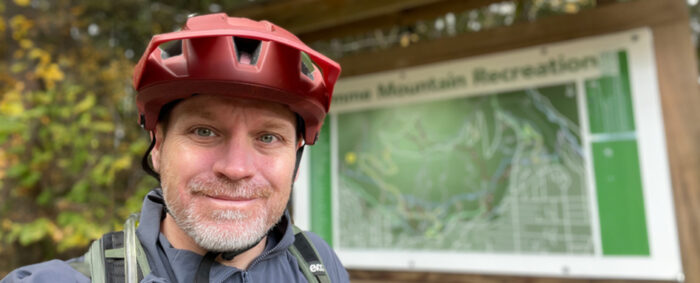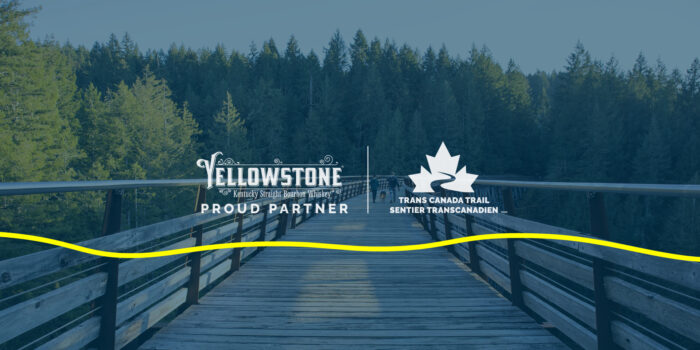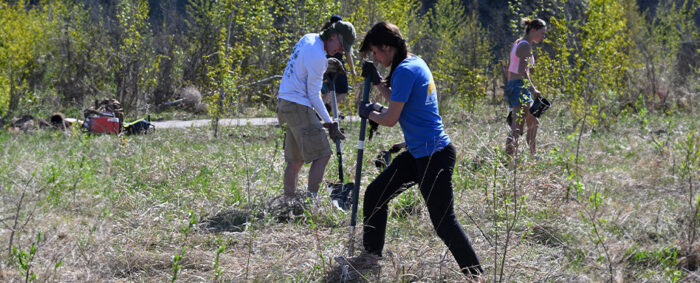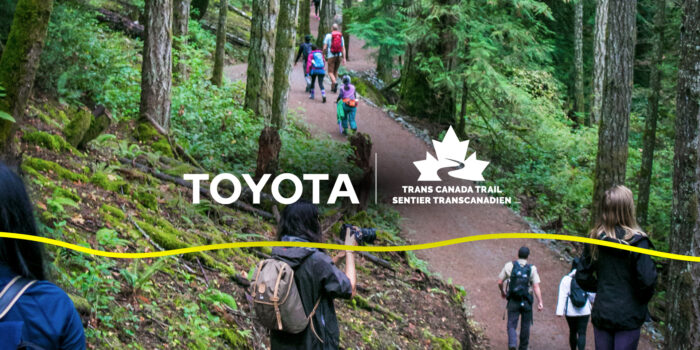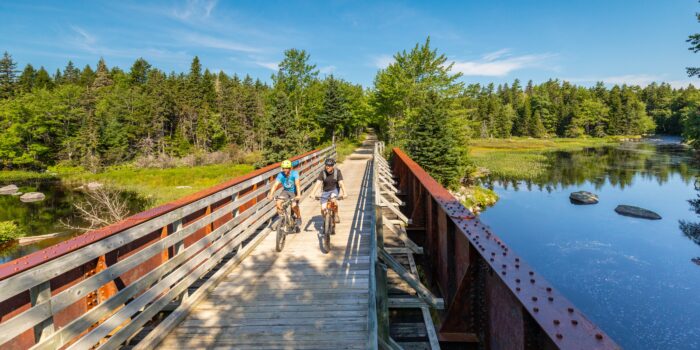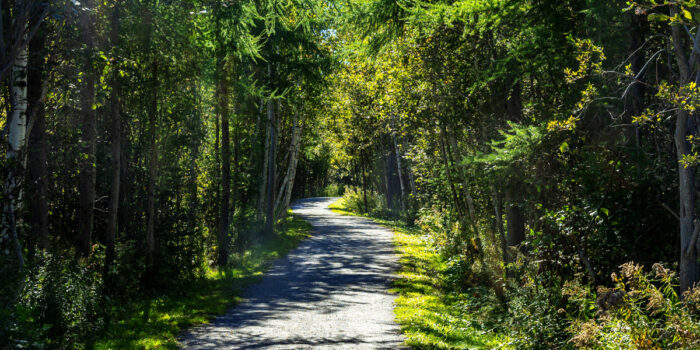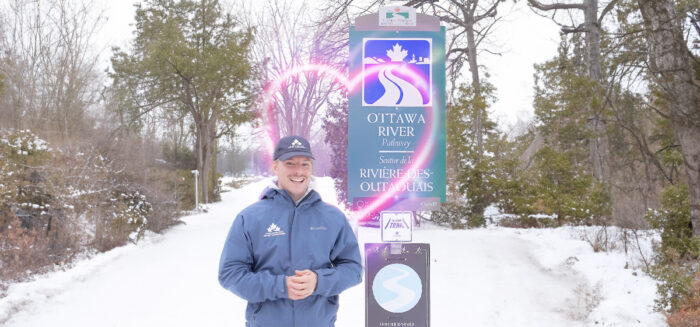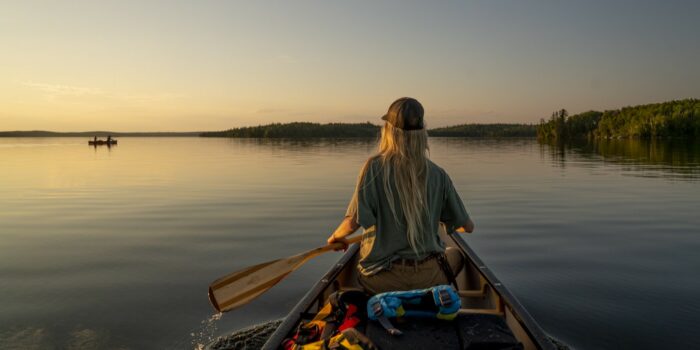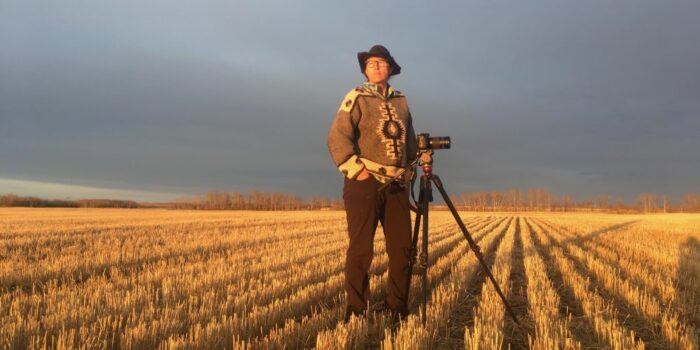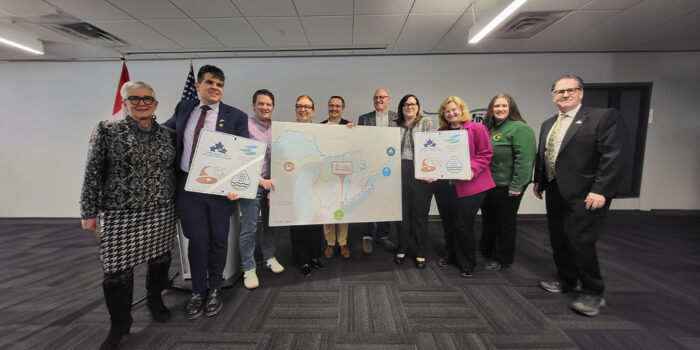5 Tips for Safe Cycling on The Great Trail
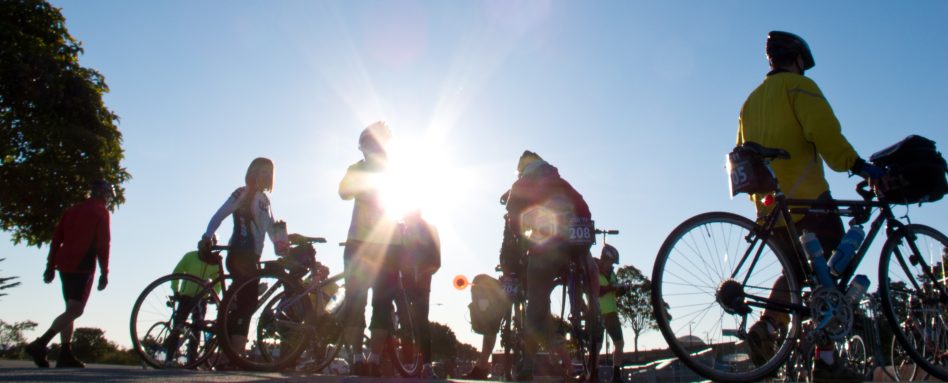
Text by Shanny Hill
I have been leading cycling tours with TDA Global Cycling for the past 12 years and have had the pleasure of travelling to and cycling in over 40 countries. When it comes to cycling safely, I have seen it all. As cyclists, we are vulnerable and need to take the risks seriously without letting them hold us back. I have some general rules you should follow — whether you are cycling across the Australian Outback, along the paved Waterfront Trail into downtown Toronto or on the packed gravel of Newfoundland’s T’Railway.
1. First Rule? Follow the Rules.
It sounds obvious, and it is, but we all let ourselves stray from the letter of the law. Many of you reading this might not have cycled in Canada before. Don’t assume that the rules are the same as where you are from. Cycling routes will often cross over and along roadways, and meander through towns and villages. Pay close attention to road signs and speed limits.
2. Wear a Helmet
In some provinces, all cyclists are required to wear an approved bicycle helmet. In other provinces, only those under the age of 18 are required to. Regardless, helmets are a good idea. There has been debate about whether helmet laws prevent injuries, but it’s indisputable that a helmet will prevent serious injuries if you fall off your bicycle and hit your head.
I have cycled in countries with a variety of helmet laws, and I have quite literally seen lives saved because a cyclist was wearing a helmet when they crashed.
3. Be Aware of Your Surroundings
As cyclists, we have no blind spots, but the cars around us do. You are more likely going to see them before they see you. An attentive cyclist can anticipate things (a car door opening, a car turning left ahead of you) and avoid serious collisions.
Getting your heart pumping while listening to AC/DC’s “Thunderstruck” or chilling out to Bob Marley tunes as you pedal sounds like fun, but I’d avoid having music in your ears. Earbuds are so good these days that they tend to block out the majority of the noise around you. You should be able to hear other cyclists and other vehicles on the road before you see them.
As a tour leader, I have seen several accidents over the years. Thankfully most of them have been minor, but the potential is always there for a serious crash. It might surprise you to know that most of these crashes (those not involving a vehicle) were entirely preventable and resulted from cyclists not paying close enough attention to what was going on around them.
4. Riding with Other Cyclists
How you choose to ride with other cyclists on roadways and cycling routes should depend on your cycling ability and theirs. For experienced cyclists, you may be inclined to form a peloton — cycling in tight formation — to increase the group’s efficiency. But this increases your risk for injury or accident. Even if you are an experienced cyclist, what about the others cycling with you? Only choose to cycle with a group if you are very confident in your own capabilities and those of the least experienced member of your cycling group.
Any time you are ahead of your cycling buddies, make sure to be very vocal and use lots of hand gestures to point out obstructions on the road – potholes, small children, roadkill, tire treads from trucks, etc.
5. Riding with Other Trail and Road Users
When you are not on public roadways dealing with vehicles, you are likely using multi-use paths. You need to be aware of walkers, joggers, families, dog walkers, birds, bears and much more.
Because The Great Trail is a series of interconnected community trails, you will find many people covering very short distances — and people frequently hopping on and off the Trail. This is why it’s important to keep a watch out for the wonderful unpredictability of what you will encounter on a ride between communities on The Great Trail.
RELATED: Taking the Roadway Less Travelled
My final piece of advice is, once you are out there on The Trail, immerse yourself in the experience. Do indeed follow the safety tips, but be sure to let go of any worries or distractions, and enjoy the privilege the Trail affords us all, of being close to nature, while still be connected to communities all around us.
There’s nothing like a good bike ride to clear the mind!


